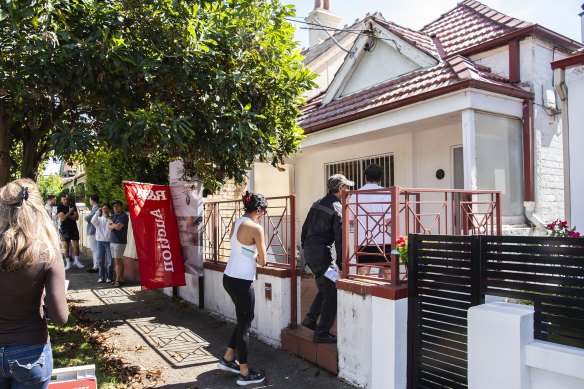The type of Sydney property you should have bought a decade ago
Sydney’s median house price has almost doubled over the past decade as demand to live in the city outstrips the supply of available land.
But unit prices have risen at roughly one-third of the same rate, far from living up to the conventional wisdom about property doubling every 10 years.

Sydney house prices have soared over the past decade.Credit: Steven Siewert
Sydney house prices rose 94.6 per cent to a median $1.65 million in the 10 years to September 2024, the latest Domain House Price Report, released on Tuesday, shows.
Only a decade ago the typical Sydney house could be bought for $850,000.
The capital’s typical unit cost about $605,000 a decade ago, and has since risen 34.6 per cent to a median $815,000.
Domain chief of research and economics Dr Nicola Powell said Sydney’s constrained geography and limited capacity for urban sprawl had pushed prices up.
“Sydney is absolutely landlocked, and the landlocked nature of Sydney is going to create a price premium for land and therefore a house,” she said.
“And layer that with Australians’ preferences for houses, it’s creating those foundations for strong rates of growth.”
The past decade included a unit-building boom, followed by a crackdown on bank-lending to investors that meant the buyer pool for some types of units shrank. Once the pandemic began, some Sydneysiders looked for detached houses with more space to work from home.
“Generally speaking, houses see greater rates of growth over the longer term because it is the block of land that sees value appreciation and it is the house that depreciates over time,” Powell said. “A unit or apartment doesn’t see that rate of price growth in comparison.”
She added it was not always the case that property prices would double in a decade, and said the lower unit growth made it hard for first home buyers to upsize, even as it meant better affordability for entry-priced properties.
Even among units, investor-skewed apartments did not necessarily have the same rate of growth as heritage units, she said.
“It’s almost like starting again – you’ve bought your first home, you’ve bought a unit. That leap to a house is so much greater,” she said.
“It’s absolutely inferior. You cannot compare that capital growth that somebody would see in a unit [with] what somebody that is a Boomer today has reaped – decades of really strong rates of property price cycles.

Sydney house prices have risen faster than units.Credit: Steven Siewert
“When prices fall it’s great for anybody trying to get into the property ladder, but we need to look at how we’re creating and building.”
She called for a more diverse array of affordable development such as terraces or townhouses.
PEXA chief economist Julie Toth agreed that the value of land had accelerated more strongly than the price of the built structure on top.
“Land is a fixed commodity, it’s finite,” she said. “As demand increases for that land, the price goes up because we can’t magically add more land. What we can do is add more density to that land.”
She said there were some locations and time frames where property values doubled in a decade, but it was not uniform.
Sydney’s geography was constrained by the harbour, coast and mountains, making it harder to supply new housing than in Melbourne, for example.
“That’s tended to place more pressure on existing homes; it’s harder to add new dwellings within that location.”
On the other hand, lower capital growth meant better housing affordability, she said.
“We want a big increase in supply and we want better affordability, which does in reality mean slower, smaller price rises,” she said.
“If we want better affordability then we can’t be seeking capital growth from housing.”
Buyers’ agent Peter Kelaher of PK Property said many buyers prefer houses but if they want to be in particular Sydney locations they may choose a more affordable apartment, rather than moving away from family, friends and amenities.
He recommends unit buyers choose an area where there will not be a lot of other apartments going up, to protect their capital growth prospects. They should avoid blocks with concrete cancer and be careful about the build quality of new apartments, he said.
Sought-after features include a balcony, open-plan living, an internal laundry and off-street parking, he said.
Realistic strata fees for a two-bedroom unit worth up to $2 million could be between $800 and $1800 a quarter, and buyers should check if there are special levies coming up and how much cash is in the sinking fund, he said.
“If you can go into areas where they can’t build apartments any more, that’s a really good place to be – but the problem is they’re established areas, and you’re going to pay.”